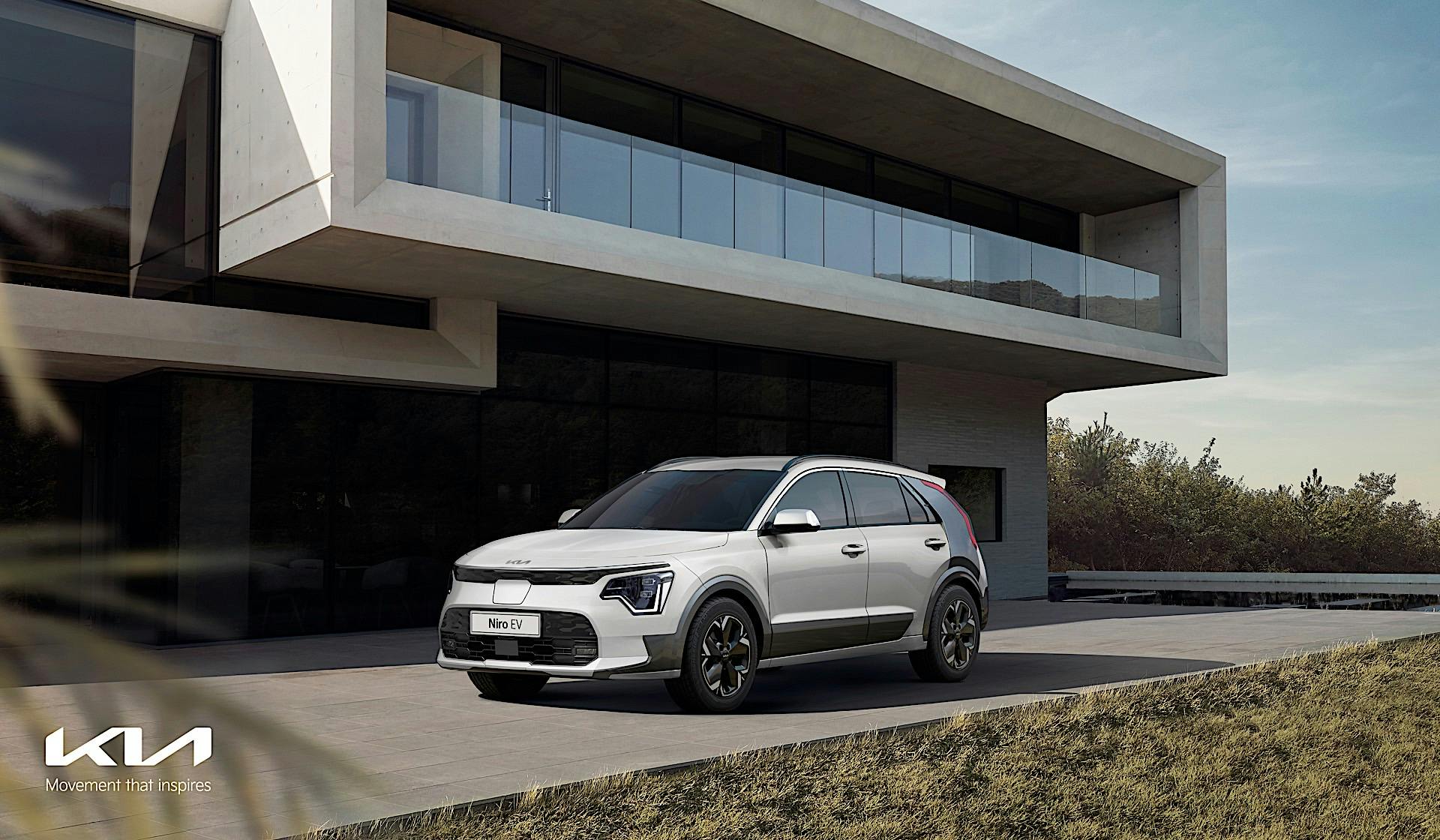The 2023 Kia Niro has made its global debut at the 2021 Seoul Mobility Show looking futuristic and sharp. Most of the cues from the HabaNiro Concept have remained intact, giving the second-generation crossover a cool, high-tech presence. The new Niro arrives with a new take on Kia’s corporate look, featuring a grille that’s placed lower, vertical headlight clusters, and silver trim running through the entire front end. Its LED daytime running lights highlight the lower portion of the headlights, creating a face.
Like the concept it’s based on, the 2023 Kia Niro gets contrasting C-pillar trim and vertical taillights. The roof spoiler also extends slightly past the rear window and is now painted in the same color as the body instead of black like in the outgoing model. Kia kept the greenhouse mostly upright but the rear window is angled slightly more than before. Like the first-generation Niro, the new car retains the body cladding but it’s now painted and becomes thicker near the bottom part of the doors. There are also silver accents on the lower front fascia and rear bumper.
Three versions will be available once again in the 2023 Niro: a standard hybrid, a plug-in hybrid, and battery electric. Hybrid models get a grille with more angled edges and fog lights at the lower corners of the enclosed portion. The Niro EV, on the other hand, gets a rounded grille and the upper portion by the edge of the hood has been closed off. The charging port is also at the nose of the car. Kia also made the EV’s front fascia more concave instead of rounded like in the hybrid.
One of the highlights of the 2023 Niro is the use of sustainable materials. Kia says that the 2023 Niro family will be built with components like recycled wallpaper and seats with bits sourced from eucalyptus leaves. Even the exterior paint is BTX free, meaning it’s water-based and doesn’t use benzene, toluene, and xylene isomers.
Thanks to the way the cabin is laid out, especially the center stack and dash, the Niro brings the futuristic feel into the cabin too, clearly highlighting its relationship to the EV6 and the new Sportage. It features two displays housed under a single piece of glass. Kia also angled the main screen toward the driver. Below the center air vents, you get the control strip made of capacitive buttons that can swap between multimedia and climate controls. On the center console, you find the start/stop button, a rotary gear selector, an electronic parking brake switch, and buttons for your heated and ventilated front seats.
Kia didn’t reveal any details regarding the powertrains but it did introduce a new feature called Greenzone Drive Mode for the plug-in hybrid version. This enables the car to automatically switch to all-electric mode when driving through designated green zones like residential areas, schools, and hospitals. The crossover will take driving history and navigation data into consideration and go into all-electric mode if it’s possible. It will also recognize places that the owner has saved as green zones including their home and workplace.
We suspect that the 2023 Niro carries over with an updated version of the outgoing crossover’s powertrain. That couples a naturally-aspirated 1.6-liter four-cylinder with an electric motor, a lithium-ion battery, and a six-speed dual-clutch automatic. Kia may have also opted for the newer hybrid powertrains based on the 1.6-liter turbo-four or a naturally-aspirated 2.0-liter I4, the latter of which is used in the Hyundai Sonata Hybrid and the Kia K5 Hybrid.
The outgoing car’s platform carries over but significant modifications to accommodate new technologies and powertrain components. As before, expect the Niro EV to be the most powerful version. This time around, it may even have a second electric motor on the rear axle, effectively giving it AWD and more power while hitting that magic 300-mile range estimate on a single charge. The 2023 Kia Niro goes on sale early next year in Korea. Expect it to arrive in North America sometime in the middle of 2022, likely only in plug-in hybrid and battery-electric versions.

